Looper pedals have become an almost indispensable tool in today’s live performance scenarios, especially when an artist is only performing with a limited number of musical hands. However, the pedals are just as useful for practising guitarist or other instrumentalists as these gadgets provide a range of options that will be otherwise not available to someone practising solo. Now, once you dive into the world of looper pedals, you’ll find a wide variety of models (as is more or less expected!) and it could be somewhat difficult to zero in on a model that will suit your present requirements (budget included).
In the list below, we’ve mainly focused on budget-friendly to mid-range models to make the list a versatile one. The models included are not necessarily the best (and most expensive!) that are out there, but—the important thing to remember: they are often the top ones in their respective price brackets.
Contents
- 1. Zoom G1on Guitar Effects Pedal
- 2. TC Electronic Guitar Ditto Looper Effects Pedal
- 3. Boss RC-1 Loop Station Bundle
- 4. Nux Loop Core Guitar Effect Pedal
- 5. Donner Tiny Looper Guitar Effect Pedal
- 6. Digitech JMSXT Jamman Solo XT
- 7. Boss RC-505 Loop Station
- 8. Xvive Duet Stereo Dual Channel
- 9. Digitech Jam Man Stereo Delay Pedal
- 10. Ammoon POCKECHO Guitar Delay & Effects Pedal
- Looper Pedal Selection Tips
- Types of Looper Pedals
- Top Looper Pedal Brands
- Average Looper Pedal Pricing
- Common Questions
1. Zoom G1on Guitar Effects Pedal
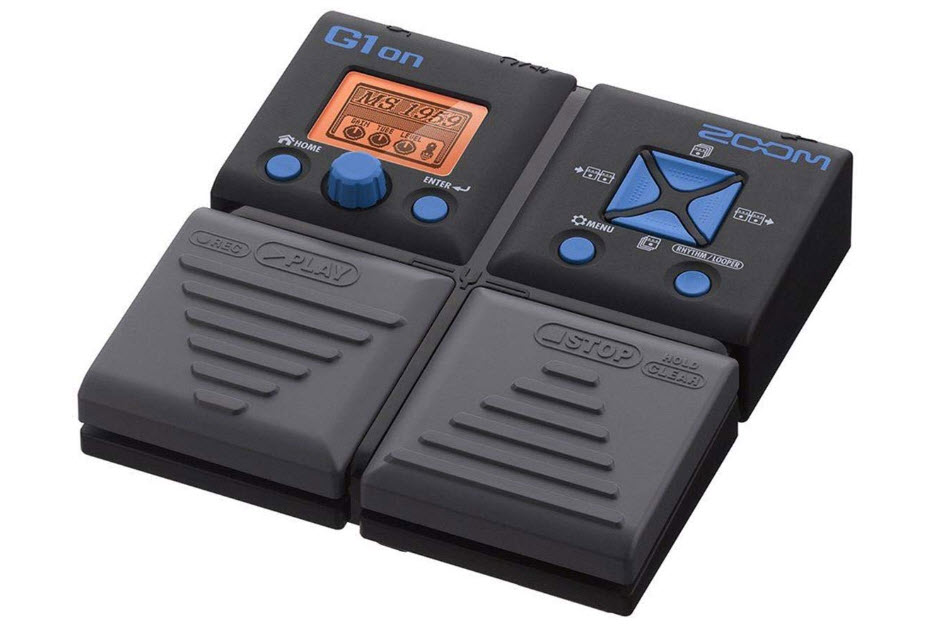
You may be a little surprised that we're starting off our list with a unit that is not a dedicated looper. However, this pedal is extraordinary in many ways---especially for all the features that it packs in one small unit. We also especially appreciate the two separate looping pedals---one for recording and the other to stop. There are loads of backing tracks as well that you can jam with as well as 75 different effects. And you can use five effects at most simultaneously. As for looper functions, you get unlimited overdub options as well as exact tempo and length settings before you start recording. However, one serious drawback is that you can record a loop (or loops) of max 30 seconds.
Pros & cons
• Budget-friendly unit for beginners
• Convenient looper functions, in addition to effects and 14 amp emulations
• Separate foot switches for record and stop
Cons
• Only 30 seconds of recorded audio
• Mono input
2. TC Electronic Guitar Ditto Looper Effects Pedal
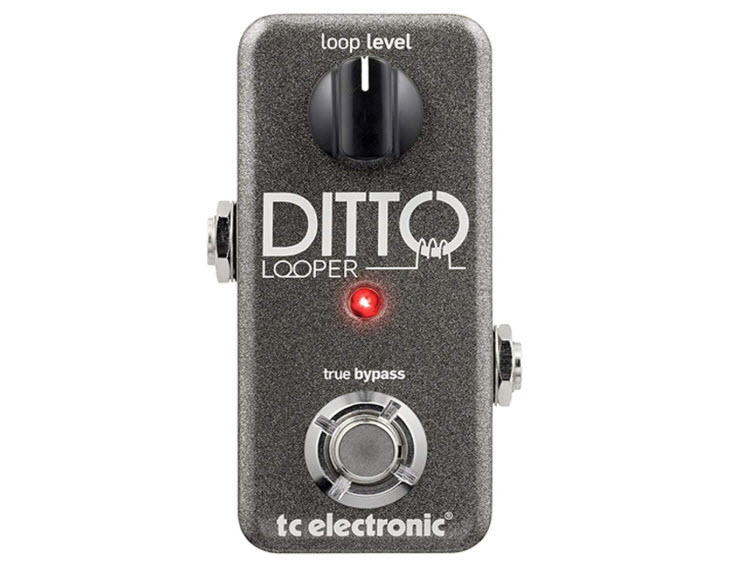
If you're looking for a true and compact looper pedal with a small footprint and without too many bells and whistles, this Ditto Looper from TC Electronic is something you will appreciate. This is a True Bypass and Analog-Dry-Through model which means that your created loops will lose nothing by way of clarity and definition when the sound is transferred to your guitar amps. If you want a simple and straightforward looper but one that delivers high quality performance, this is the model for you. You get 5 minutes of looping time with unlimited overdub facility. There are input and output channels that let you upload or download files from other devices as and when you need it. The model also provides you with enough creative freedom with its undo/redo options and comes with a really intuitive and convenient one-knob control that lets you access different loop settings without any difficulty. In short, a great model for practice as also for using onstage---and something that won't burn a hole in your pocket either. However, if you want something more advanced, you may also check the Ditto X2 model. The latter retains the simplistic operations of the present model but comes with some extra features that some guitarists may find useful.
Pros & cons
Pros
• Great tonal integrity (zero latency+ zero tone coloration)
• Super intuitive controls
• Practical and minimalistic design and lack of cumbersome features make for ease of use
• Excellent sound quality with 24-bit uncompressed audio
Cons
• No tap or sync tempo
• Fewer features translate to less control of the loops
3. Boss RC-1 Loop Station Bundle
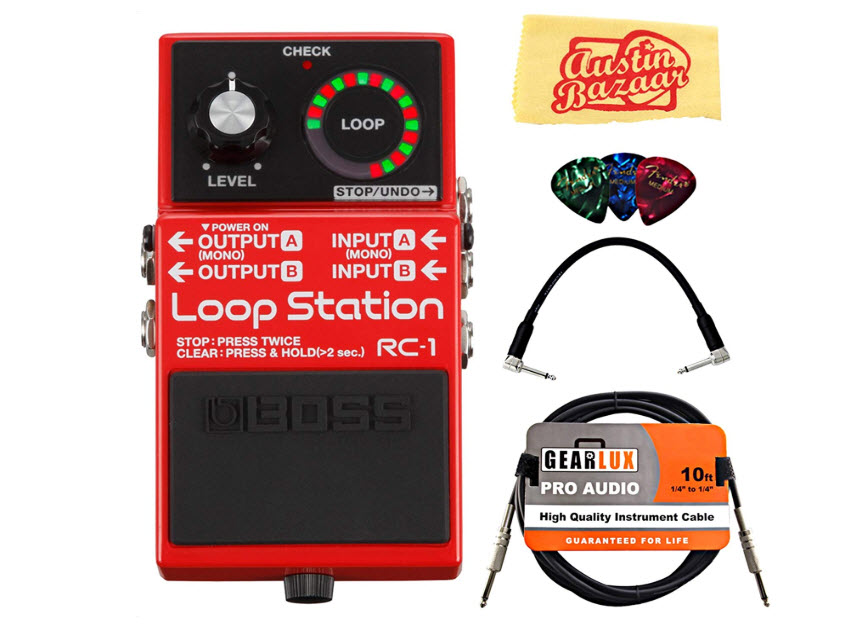
Here is another simple, compact and altogether awesome product coming from none other than BOSS. The brand has been world leaders in looping for many years now, right since their release of RC-20. Over the years, they have kept churning out great and hugely popular models such as RC-3, RC-30 and the huge RC-300 and more. But the present Loop Station stompbox model is by far the simplest one yet and it makes looping even easier to control than ever before. The model features 12 minutes of stereo recording time and a really excellent loop indicator with alternating red and green LED lights. The indicator displays the current loop mode for recording, overdubbing or playback. This feature will be particularly useful for beginners. The model takes a standard pp3 battery or you may use Boss' own PSA power supply tool that is sold separately. You've got a flexible external footswitch control and stereo inputs and outputs. And as you'd expect from a BOSS compact model, this pedal is built to last. In fact, you'll have a hard time destroying it even if you were thus inclined!
Pros & cons
Pros
• The newly introduced easy to read loop indicator display
• The current bundle offer at Amazon (sold by Austin House) includes a patch cable and an instrument cable---both highly useful for guitarists.
• 99 track saving spots or banks
• Grippy underside that ensures that the thing doesn't slide when you're using it
Cons
• No USB cable in the box and the cable is something of an odd size which means you may have a somewhat hard time finding one.
• No dedicated stop button.
4. Nux Loop Core Guitar Effect Pedal
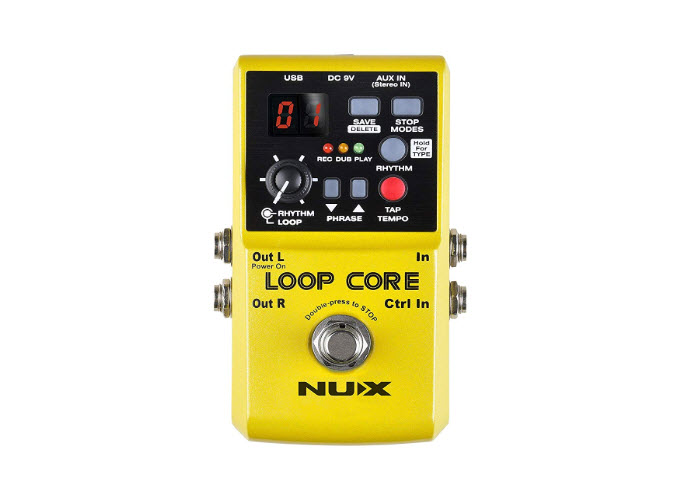
If you want an affordably priced looping pedal that comes with great functionality, you'll be hard put to find a better deal than this model. This pedal does not only look similar to the famous Boss RC-3 Loop Station, but you'll be surprised to find that it comes quite close to matching that model's quality as well. We say surprising since Nux Loop Core is available at almost half the price of RC-3. Similar to BOSS pedals, the present model comes in a solid and sturdy metal body construction (save the battery compartment which is of plastic). All the essentials that you will commonly look for in a mid-scale looper such as stereo inputs and outputs, USB connectivity, a selection of drum and rhythm patterns to practice with, external footswitch option, a decent storage bank---all are there in this model and at an amazing price of $99 at that! The only thing that you may have to complain about is that the built-in drum selection phrases are not too good. However, that isn't too much of an inconvenience since you can always add tracks of your choice via the inputs. Also, unlike as in RC-3, there is no quantize or BPM settings. However, there is a tap tempo and this should be good enough for most guitarists.
Pros & cons
Pros
• Tempo change option which allows you to alter the tempo of a loop without at the same time altering its pitch as well. The loop stretches out automatically without changing the pitch or key.
• 99 memory slots
• 6 hrs of recording time
• Option to add external footswitch for greater control
• Overall incredible value for price
Cons
• The footswitch is longish and narrow and it may take some time to get used to it.
5. Donner Tiny Looper Guitar Effect Pedal
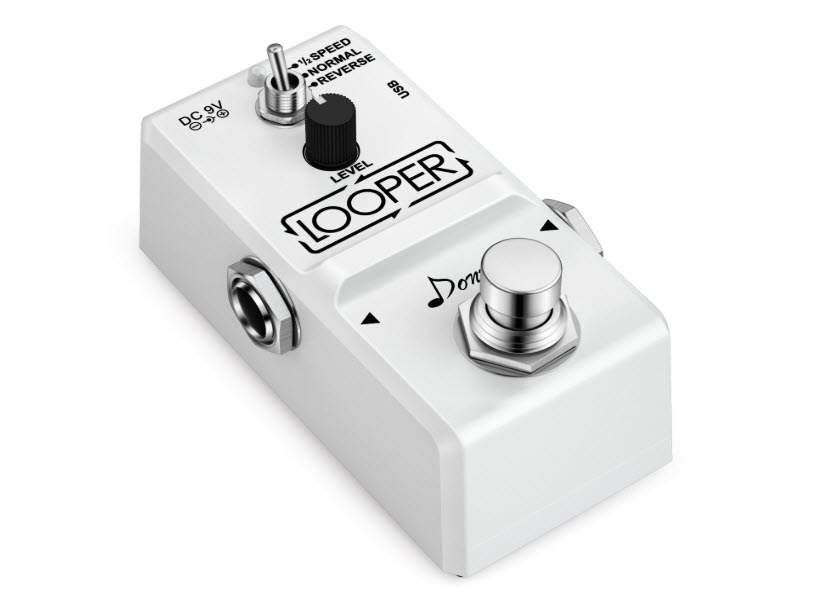
This is the second budget model in our list and in our suggestion, this model is a good one for beginners---those who are still trying to master their looping abilities and don't want to get confused with too much functions, effects, etc. The model looks very much like a simple Ditto. And just like the Ditto, you get true bypass with this model along with the other typical features such as undo/redo, overdub, import/export loops, phrases, riffs to and from your computer device, reverse and half-speed play, etc. Inputs and outputs are, however, both mono which can appear as a bit of a setback. However, beginners needn't worry too much about it since loop signals are normally the firsts to reach your amps in any given signal chain. Other than that, the model sports a sturdy body with its aluminum alloy build and is built to last. In all, a good bargain at this price.
Pros & cons
Pros
• 10 minutes of looping
• High quality 24-bit/44.1 kHz zero latency sound
• Led indicator showing the looper status
Cons
• Mono in/outputs
• Limited controls
• No option to add an external footswitch
6. Digitech JMSXT Jamman Solo XT
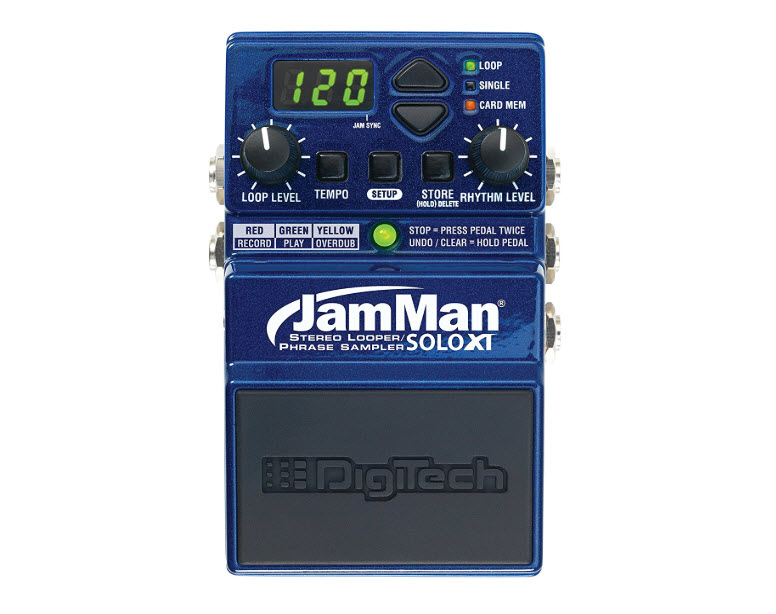
Taking a step up now, here is Digitech's Jamman Solo XT which is the latest upgrade on the already hugely popular Jamman Solo model. The current model stores 35 minutes of stereo looping and boasts of as many as 200 memory slots. Apart from that, the model is jampacked with features, some of the coolest of them being the "auto-quantized looping" (where the pedal assists you to some degree in keeping time), adjustable BPMs, auto-record and 3 different stop modes. However, this model, for all its advanced features, is perhaps best suited for playing or rehearsing with your bandmates. With the help of the system's powerful JamSync, you can link two or more (in our opinion, two ought to suffice!) solo XTs to create a multi-looping system.
Pros & cons
Pros
• Solidly built rugged metal chassis
• Aux input
• Time stretching option without altering pitch or key of the loop
• 10 pre-loaded drum loops created by Pat Mastelotto
• Create your own loop library by syncing your loops into the new JamManager XT
Cons
• A single pedal means more room for error
• No or little significant improvement over the previous JamMan Solo (applicable only for those who already own this last pedal)
7. Boss RC-505 Loop Station
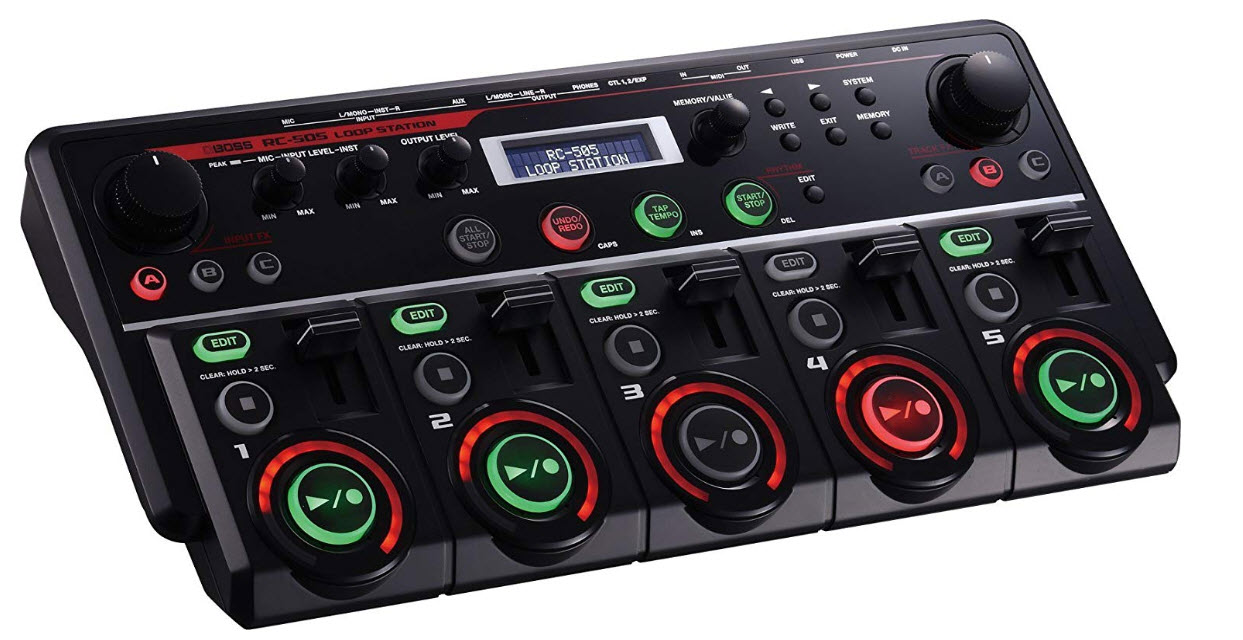
To anybody not familiar with this model, the very name BOSS RC-505 is bound to evoke the image of something gargantuan. And they'll be surely in for a good surprise when come face to face with this relatively smaller and altogether manageable tabletop. An alternative to the popular Dub FX, this unit is really meant for keyboardists, beatboxers, vocalists, etc rather than for pure guitarists. The model is really a hand-operated looper pedal, however paradoxical that may sound! The unit packs plenty of useful features including intuitive controls, five separately controllable tracks, loop quantize, etc. So, while it is great for the likes of beatboxers or vocalists, is it really worth investing for a guitarist in this highly expensive model? Well, the answer is yes and no. If you're a pure guitarist, it is best to give it a skip. However, if you are a vocalist, too, and want to introduce the looping effects for your vocal chords, this should prove a more than fruitful investment.
Pros & Cons
Pros
• 99 memory slots
• Independent volume faders for each track (when playing simultaneous tracks)
• 85 on-board rhythm patterns
Cons
• Expensive
• Not ideal for guitarists who aren't vocalists, too.
8. Xvive Duet Stereo Dual Channel
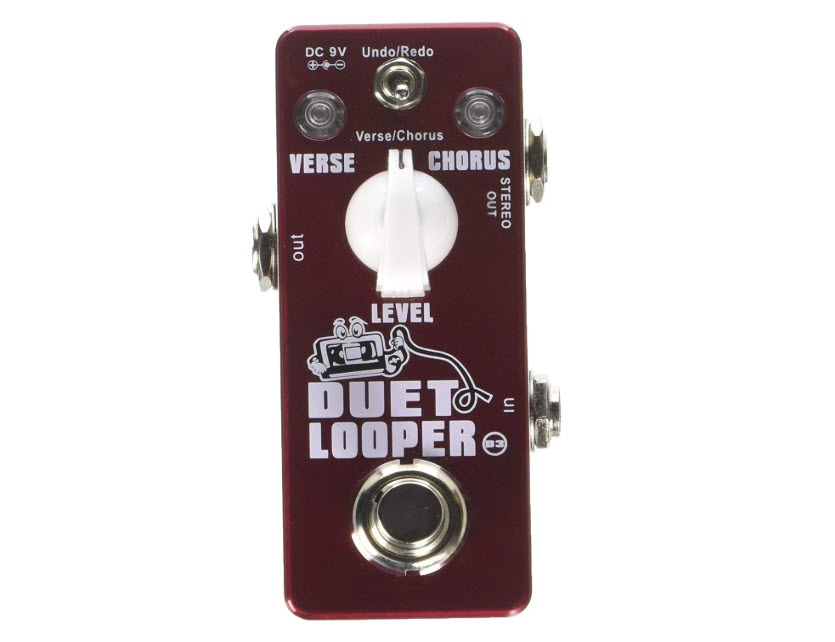
This is another budget-friendly option with true bypass and HQ analog output along with some singular features, most notably the verse/chorus mode, ability to series record while playbacking two loops, etc. The model is the brainchild of Ray Heasman, the man who had earlier designed the popular looper models Pigtronix Echolution and Pigtronix Infinity. You get 5 minutes of looping time and the true bypass also ensures excellent quality 24 bit/44 kHz stereo audio output. The model also offers dynamic input and output range to suit loud instruments. The inputs come with especially high headroom with remarkably low (less than 1.5ms) latency response.
Pros & cons
Pros
• USB support for all future upgrades and updates
• Inputs amply protected against irregular polarities and voltages
• Offer both RecOverdubPlay and RecPlayOverdub options.
• Ability to interface more than one instrument with its linelevel technology
Cons
• Limited controls
• No quantize, BPM, or tap tempo options
9. Digitech Jam Man Stereo Delay Pedal
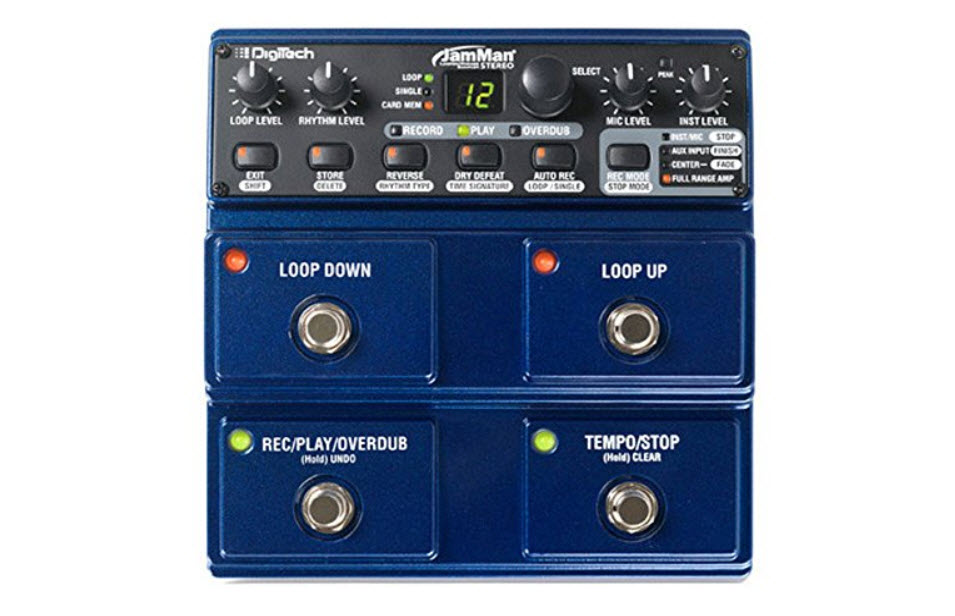
When Digitech upgraded on their Original JamMan, they came up with three brand new loopers: Jamman Solo, Stereo and Delay. In the subsequent days however, Jamman Stereo has often been hailed as the best Digitech model and this for a number of reasons, convenience and ease of use not being the least of them. The model sports four sturdy metal footswitches and also happens to be the most sturdy and well-built one among all Digitech models. There are 99 memory banks for a total of 35 minutes of recorded loops. Separate and well-paced out Tempo/Stop, Replay/Overdub and Loop Up and Loop Down switches make the unit easy enough to operate on stage, especially in darker atmospheres. Other useful features include an auto recording button and option to add an extra footswitch for greater control. However, there is no quantize or BPM settings.
Pros & cons
Pros
• Two extra pedals that allow you to switch loops remotely
• Intuitive controls
• Extended storage up to 32 GB (16 hours of recorded loops!)
Cons
• Some of the features can only be enjoyed via an additional footswitch
• External footswitches also tend to be somewhat noisy on this unit
10. Ammoon POCKECHO Guitar Delay & Effects Pedal
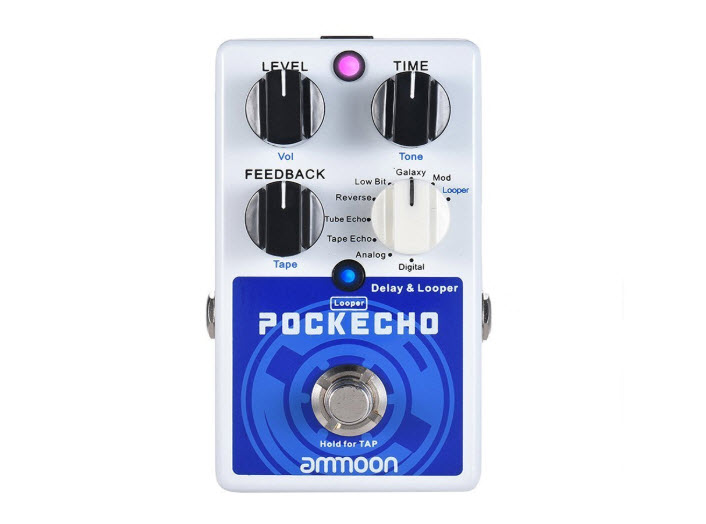
Just like our first model, this is a looper and an effects pedal all in one. You can use the Looper as a separate mode or may use it simultaneously with effects such as delay, echo, distortion, reverb, etc. The model also offers the tap tempo function which is something uncommon for pedals of this price point. It also has a sturdy, full metal body built to endure and last. You get 5 minutes of recorded loops with this model.
Pros & cons
• Looper and effects pedal all in one
• 8 different delay effects
• Ability to adjust delay repetition and delay time
Cons
• Mono input
• Limited controls
Looper Pedal Selection Tips
A looper petal is something that nearly every guitarist considers purchasing at one point in time. Without question, it can really have an impact on the tone of the guitar, spicing things up in different ways that really make a difference.
Shopping for just the right type of looper pedal can be a little bit confusing, especially for first-time purchasers. There are a lot of different options, and instead of throwing money around and wasting time, there are a few questions every person should ask themselves in the very beginning. Here are some initial tips to selecting a looper pedal.

Buying Tips
How Much?
Price dictates nearly any type of purchase, so of course it is important to set a budget for a pedal like this. There is such a broad range of pricing out there that a person can really dropping a lot of money on a looper if they are not careful.
Affordable options are going to be wonderful, but they might not have the same type of features that the more expensive ones showcase. It might make sense for people purchasing their first one to go ahead and focus on a strict budget. Depending on the use of the first one, the next purchase can be a little bit smarter.
What Is My Experience Level?
Loop pedals are not the most difficult thing to understand and figure out, but there is a learning curve. If a person has time to learn how to use it, they can really be useful. If it is something that is mainly going to be just played around with, it might make sense to go with a cheap option in the beginning.
Experience can make a lot of difference when it comes to getting the most out of some of the top features on every pedal. If a pedal is purchased that has a lot of features and only half of them or less are even used, it really does not make sense to spend that extra money.
What Will I Use It For?
These devices are geared towards helping guitarists, but each person is going to use it in a different way. If the device is really only needed for one guitar section, there are very cheap options that can do that job very well.
The more versatile a pedal is, generally the more expensive it is going to be. It is a better investment to have a versatile one, but if it is never used in all the different ways, it can be a bit of wasted money.
Will I Use It With Other Instruments?
Looping guitars is only one way that a pedal can be used. It also can be used with microphones, MIDI controllers and more. These versatile ones are going to be more expensive, but it is perfect for someone who wants ultimate flexibility.
If the pedal is going to be used possibly for other things, it makes sense to invest in one that can do it all. It might be a little bit more of an investment upfront, but it will be worth getting multiple ones down the road.
Do I Need A Certain Length?
A looper pedal is going to be able to record different segments of any type of song and repeat it. Some people only need a little bit of length, while others need quite a bit of memory.
Some loopers will come with a fixed amount of memory, while others have SD card slots that allow people to increase memory. It is always an important to crunch the numbers beforehand, because music can start to add up in memory quite a bit. This is especially true for something that is recorded at high quality.
Most people are going to benefit from having a looper that will have that SD slot. SD cards are really not all that expensive, so expanding the memory is relatively easy and affordable.
Will I Use The Pedal For Live Shows or Strictly at Home?
It might not seem like much of a difference, but some pedals are dedicated to live performances, while others work better at home. Live performance-friendly pedals have a simplistic layout with lights that can be dimmed. People also appreciate general ease of use with these.
A home looper pedal can be a bit clunkier. They might have a few more features to mess around with as well. People shouldn’t try moving all around with these, but they can be transported once in a while.
Types of Looper Pedals
There are a lot of different variations of looper pedals. Each one targets a certain type of musician. Here is a look at those types.
Simple Loop Pedals
These are going to be the most affordable, user-friendly pedals on the market. They have one multi-function footswitch along with a volume knob. The footswitch is functional to control a lot of different things during the recording and editing process.
While the controls are simple, it still takes a little bit of practice to be able to control the pedal during a performance. Being able to operate the switch is important, so people should play around with it a decent amount before doing a live show.
Complex Loop Pedals
This is a more broad category, but basically this is where people will find the more professional options with additional features. These pedal designs can have built-in grooves, pedal switches, stereo in.outs and more. Recording in high quality is also stressed with these pedals a little bit more.
The price range of these pedals can vary quite a bit depending on the brand and amount of features. They do come with more of a learning curve, but not too much different than the simple pedals.
Top Looper Pedal Brands
As one might expect, a lot of the top looper pedal brands are very involved in the music industry. Many musicians are familiar with some of the other products offered by each company.
Boss continues to be one of the top brands on the market today. They put out a wide range of pedals for people of varying skill levels. Digitech is another extremely popular choice, and they focus on versatility, especially with their more premium models.
Other brands include Moozikpro, Vox, Electro Harmonix, Bonsai, TC and Nux. These brands all offer similar products in many regards, but each company might have an added bonus feature or two that draws in customers.
Average Looper Pedal Pricing
The majority of loopers fall in the $50-$200 range. After that, they can get pretty expensive, but the pricier boards will basically be entire stations for true professionals to really get the most out of.
A lot of the highest rated ones on Amazon sit around the $100 range. These pedals can do a lot of cool things, so being able to get a flexible model for that price is a great deal.
Common Questions
Still have questions? Don’t worry, a lot of people do. Here is a look at some of the most common questions we get. It is important to really know exactly what you are shopping for, especially when doing it online. Although places like Amazon offer free returns a lot of the time, it can be time consuming to try option after option without really finding just the right fit out there to go with.
What is a Looper Pedal?
The simplest way to describe the pedal is that a person records what they are playing, and then the device plays it back. This allows the musician to then play over the music, recording a new line.
What is the best looping pedal for live performance?
The Boss RC-300 has near-flawless reviews online. It is on the pricier side, which is why it is recommended for live performers who might get a little bit more out of it. The device is a full pedal board, complete with a carrying case and all the cables needed.
What is the easiest loop pedal to use?
Any simple loop pedal is going to be the easiest to learn. The footswitch is big, the instructions are short and best of all, they usually sound really good if purchased from a reputable company.
All of these pedals will eventually be pretty easy to use. It just comes down to having the right familiarity with the pedals with a little bit of practice. It takes some work, but eventually most people will be able to get it down just fine.
What is the best loop pedal for acoustic guitar?
Acoustic guitars that have a way to plug into a looper is easy enough to have set up. For those who don’t have a plug, the guitar needs to be microphoned up before it can be properly used.
Since acoustic guitars are a little bit more simplistic than electric guitars, a simple pedal might be best to go with initially. Something like the Bonsai Looper Effects Pedal or VOX Lil’ Looper Guitar Multi-Effects Pedal are good places to start.
